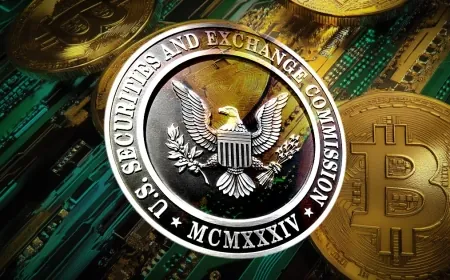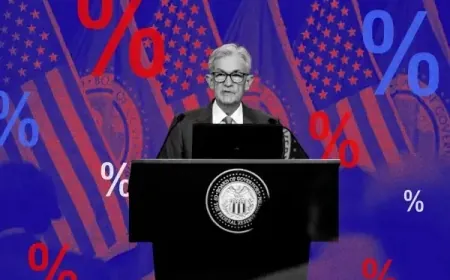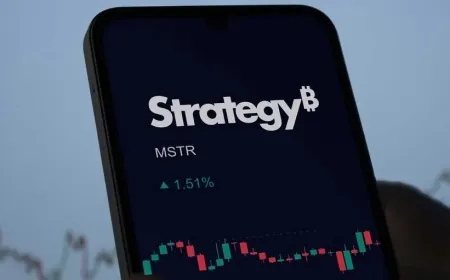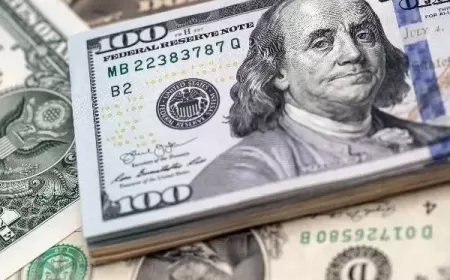If You Put $10,000 Into Bitcoin Today, What Could It Turn Into by 2035?
Bitcoin has created massive gains over the past decade. What happens if you invest $10,000 now? We break down realistic 2035 outcomes from crash to breakout.

If you bought $10,000 worth of Bitcoin ten years ago, you'd be sitting on millions today. That’s not an exaggeration—it’s what happened to those who entered the market in mid-2015, when Bitcoin was trading below $300. Today, the asset has topped $117,000 and continues to draw attention from investors, regulators, and global institutions.
But Bitcoin’s past is no guarantee of its future. With market cycles now more tightly tied to global finance and regulation, the next ten years may look very different from the last. If someone puts $10,000 into Bitcoin in 2025, what could it realistically be worth by 2035? The answer depends heavily on how adoption, regulation, and utility evolve.
Here’s a grounded look at three potential outcomes.
If Adoption Stalls: A Value Below Today’s Price
Although Bitcoin’s position as a digital asset is stronger than ever, setbacks are possible. A meaningful decline in price over the next decade would likely require major disruptions, not just a slowdown in market enthusiasm.
One such risk is technological. If quantum computing advances faster than anticipated, it could challenge the encryption that underpins Bitcoin’s network. While theoretical today, this threat could undermine investor confidence if not addressed by upgrades to the protocol.
Another concern: policy risk. Governments may not ban Bitcoin outright, but aggressive taxation or restrictions on crypto-related banking services could limit access. Although current U.S. policy appears more favorable than restrictive, political winds change fast—especially around election cycles.
There’s also the risk that Bitcoin simply becomes outdated. Competing blockchains offering faster settlements, lower fees, and broader functionality could erode its dominance. If Bitcoin fails to evolve or retain cultural relevance, it might still exist—but no longer as the flagship digital asset.
Under this scenario, Bitcoin’s price could dip below $100,000 by 2035. A $10,000 investment might be worth less than what was originally put in, especially after inflation and opportunity cost.
If Bitcoin Keeps Gaining Ground: $600,000 to $1.2 Million
A more likely outcome is that Bitcoin continues on the path it’s already walking: slower, steadier growth, driven by increased ownership, financial integration, and gradual improvements to its infrastructure.
The past few years have seen major asset managers enter the space, with public companies adding Bitcoin to their balance sheets and retirement accounts incorporating crypto exposure. This kind of institutional involvement doesn’t drive explosive growth, but it does deepen the asset’s roots in the global financial system.
At the same time, technical developments—particularly the maturation of the Lightning Network—are addressing some of Bitcoin’s historical weaknesses around transaction speed and scalability. If these improvements take hold, Bitcoin could see more use in payments, not just speculation or savings.
In this scenario, the price of Bitcoin could rise to somewhere between $600,000 and $1.2 million. That’s not a moonshot—it’s a projection based on 5x to 10x returns over the next ten years, consistent with a high-risk asset that continues to mature but faces fewer exponential jumps.
A $10,000 investment in that case could be worth between $50,000 and $100,000 or more by 2035.
If the Financial System Changes: $5 Million and Beyond
A more ambitious projection hinges on Bitcoin breaking into the heart of the global financial system—not just as a traded asset, but as a recognized monetary reserve.
So far, no central bank holds Bitcoin on its balance sheet. But that could change. If even a handful of countries—especially those facing inflationary pressure or limited access to global credit markets—turn to Bitcoin as a reserve currency, demand would spike. Supply, meanwhile, remains capped at 21 million coins.
There's also the long-term prospect of Bitcoin becoming embedded in daily economic life. Widespread use in payroll, remittances, and digital commerce could dramatically expand the addressable user base. Combined with financial products like collateralized Bitcoin loans and tokenized securities, the ecosystem could develop in ways that make Bitcoin less speculative and more fundamental.
In this scenario, Bitcoin’s price could reach $5 million or more. That would value a $10,000 investment at half a million dollars or higher. However, it assumes profound shifts in how the world stores, transfers, and trusts value.
Most Realistic Outcome? Between Decline and Explosion
The most balanced forecast sits between extreme outcomes. While Bitcoin’s past returns are unlikely to repeat, the asset has proved resilient—recovering from collapses, government crackdowns, and internal feuds. Its reputation as a hedge against monetary instability has only grown, especially in countries with volatile currencies.
Bitcoin is now part of the financial conversation at the highest levels. From BlackRock to the SEC to El Salvador, the asset is increasingly treated as a legitimate, if volatile, store of value. That kind of recognition reduces the odds of regulatory destruction and raises the chance of continued, if bumpy, growth.
In practical terms, a $10,000 investment today could reasonably grow to $50,000–$100,000 over the next ten years, assuming consistent progress in utility, infrastructure, and institutional trust.
What a $10,000 Bitcoin Investment Could Actually Return by 2035
If Bitcoin fails to gain ground over the next ten years, a $10,000 investment made today could barely move. In fact, depending on entry point and fees, it might be worth the same—or even less. That scenario would reflect a future where Bitcoin struggles to grow beyond its current user base, and where government restrictions or competing technologies sap its market share. A long period of stagnation could leave investors holding an asset that underperforms inflation, let alone equities.
A more reasonable trajectory assumes Bitcoin remains volatile but continues expanding its presence in global finance. If institutional demand increases and more financial platforms incorporate Bitcoin exposure—through retirement accounts, ETFs, and direct balance sheet holdings—a long-term investor could see moderate gains. In this environment, a $10,000 position could reach between $50,000 and $100,000 over a decade. That’s roughly in line with historical compounding for high-risk assets, assuming no systemic breakdowns.
The most aggressive projection—where Bitcoin becomes a reserve asset or sees widespread adoption in consumer payments—could push those returns far higher. If Bitcoin climbs into the multi-million-dollar range per coin, a $10,000 stake today could be worth hundreds of thousands. But for that to happen, central banks would need to treat it as monetary infrastructure, not speculation. That shift would be historic and disruptive—not impossible, but far from guaranteed.
These figures aren’t targets. They reflect outcomes tied to actual, observable developments—legal treatment, monetary policy, investor behavior, and network usage. Bitcoin’s price a decade from now won’t be decided by charts or slogans. It will come down to how the world treats the idea of decentralized money when the novelty wears off.
Bitcoin Price History from 2009 to 2025
| Year | Bitcoin Price (Approx.) | Key Event |
|---|---|---|
| 2009 | $0 | Bitcoin launched by Satoshi Nakamoto |
| 2010 | $0.01 – $0.39 | First exchange and pizza purchase |
| 2011 | $0.30 – $31 | First major bubble and crash |
| 2012 | $4 – $13 | First halving |
| 2013 | $13 – $1,100 | First bull run |
| 2014 | $300 – $1,000 | Mt. Gox collapse |
| 2015 | $200 – $500 | Slow recovery begins |
| 2016 | $400 – $950 | Second halving |
| 2017 | $1,000 – $19,000 | Mainstream bull market |
| 2018 | $3,000 – $17,000 | Post-peak crash |
| 2019 | $3,400 – $13,800 | Volatile recovery |
| 2020 | $5,000 – $29,000 | Third halving, institutional entry |
| 2021 | $30,000 – $69,000 | New ATH, Tesla, El Salvador adoption |
| 2022 | $17,000 – $48,000 | FTX crash, crypto winter |
| 2023 | $27,000 – $44,000 | ETF optimism returns |
| 2024 | $60,000 – $117,000+ | ETF approval & ATH |
| 2025 | $117,000+ | Post-halving surge |
- Bitcoin started at zero in 2009 with no market value.
- Halvings and institutional adoption sparked major growth.
- Despite crashes, Bitcoin consistently recovered over time.
- ETF approvals in 2024 pushed Bitcoin beyond $100,000.
- 2025 reflects higher maturity and wider mainstream trust.
Also Read: Top 5 Stablecoins in 2025 — One Holds More U.S. Treasuries Than Germany





























































